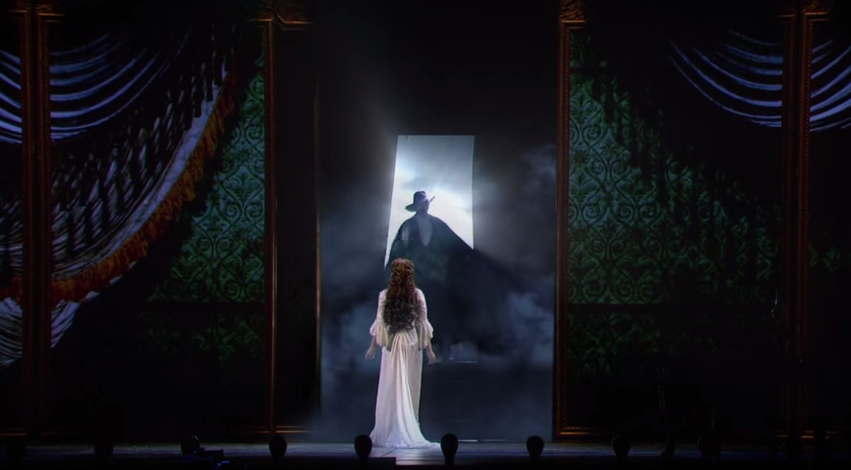
Carlotta loses her voice after something was put in her throat spray. The famous scene of the chandelier crashing on to the stage happens after the phantom sees Raoul and Christine pledge their love in the rooftop of the Opera House (at the end of the 1st act) The chandelier crashes closer to the end when the Phantom kidnaps Christine.

The Phantom is a musical genius – a composer and singer. In fact, the rest of his face even looks handsome. The Phantom’s face is disfigured only on one side, hence the half mask which has become a trademark of the musical.

Because the passages are so vast Erik takes Christine first on a white horse, then on a boat. There is no mention of Raoul’s older brother, the Count de Chagny The phantom is referred to only as “The Phantom” The Phantom takes Christine to his underground chambers on a boat. Christine tells her best friend, blond-haired Meg Giry, that she was able to receive singing lessons from her tutor “The Angel of Music.” When Raoul, the Viscount de Chagny, hears Christine sing during her debut performance he says that she is “no longer the gawkish girl” he once knew but does not explain when or how they met. The former director was named Lefevre Christine gets her first chance to sing at the opera because Carlotta the lead soprano refuses to sing anymore after one of the props “accidentally” fall during the rehearsal. The new managers of the Opera House are introduced as Monsieurs Fermin and Andre. The stagehand Joseph Buquet is killed before the end of the 1st act (halfway into the musical). Here are just some of the differences: In the movie/play: The story starts in 1911 when the contents of the Paris Opera House are being auctioned off After the auction, the story flashes back to the opera’s golden days during the rehearsal of ‘Hannibal’ – a performance meant to be a grand opening scene with elaborate costumes and dancers.

Support your argument with evidence from both versions. Analyze the differences between the two versions and argue how the adapted version adds meaning to the original.


 0 kommentar(er)
0 kommentar(er)
